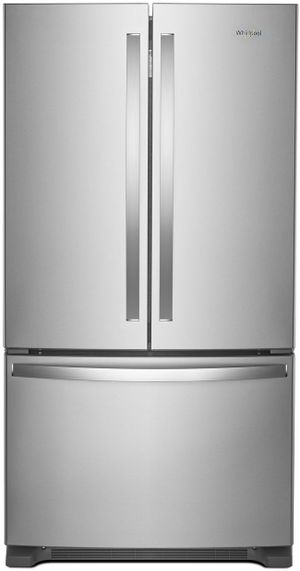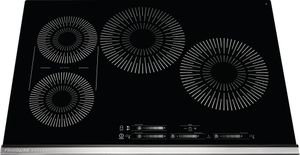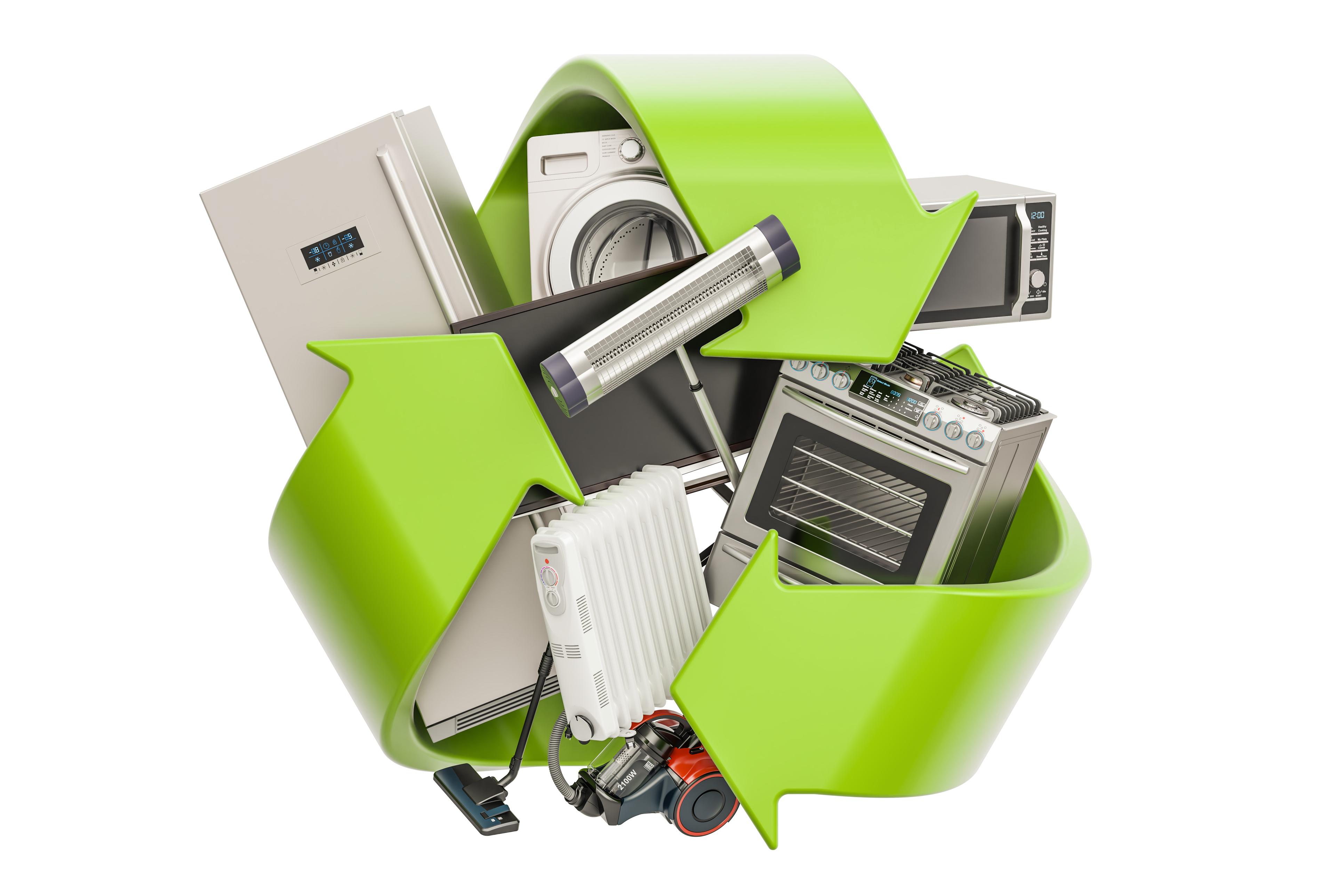
At a Glance:
Understanding Appliance Recycling
The Environmental Benefits of Appliance Recycling
How You Can Recycle Used Appliances
5 Recommended Appliance Replacements
In a world where convenience is king, appliances have become our steadfast allies, serving us at the press of a button. But what happens when these helpers age, break down, or become obsolete?
For many, the answer has been landfill disposal, contributing to a growing environmental concern. But there's a greener, more environmentally-friendly solution — appliance recycling. This method not only helps reduce landfills but also aids in conserving our natural resources.
As we delve into the world of appliance recycling, we'll uncover its benefits and explore how it works. We'll also discuss how you, too, can contribute to this initiative for a healthier, cleaner environment.
Explore New Appliances
Recycling your old appliance and needing a new one? Explore appliances from top brands like Fisher & Paykel, Cafe, Whirlpool, and more at Idler's Home today!
Shop AppliancesUnderstanding Appliance Recycling
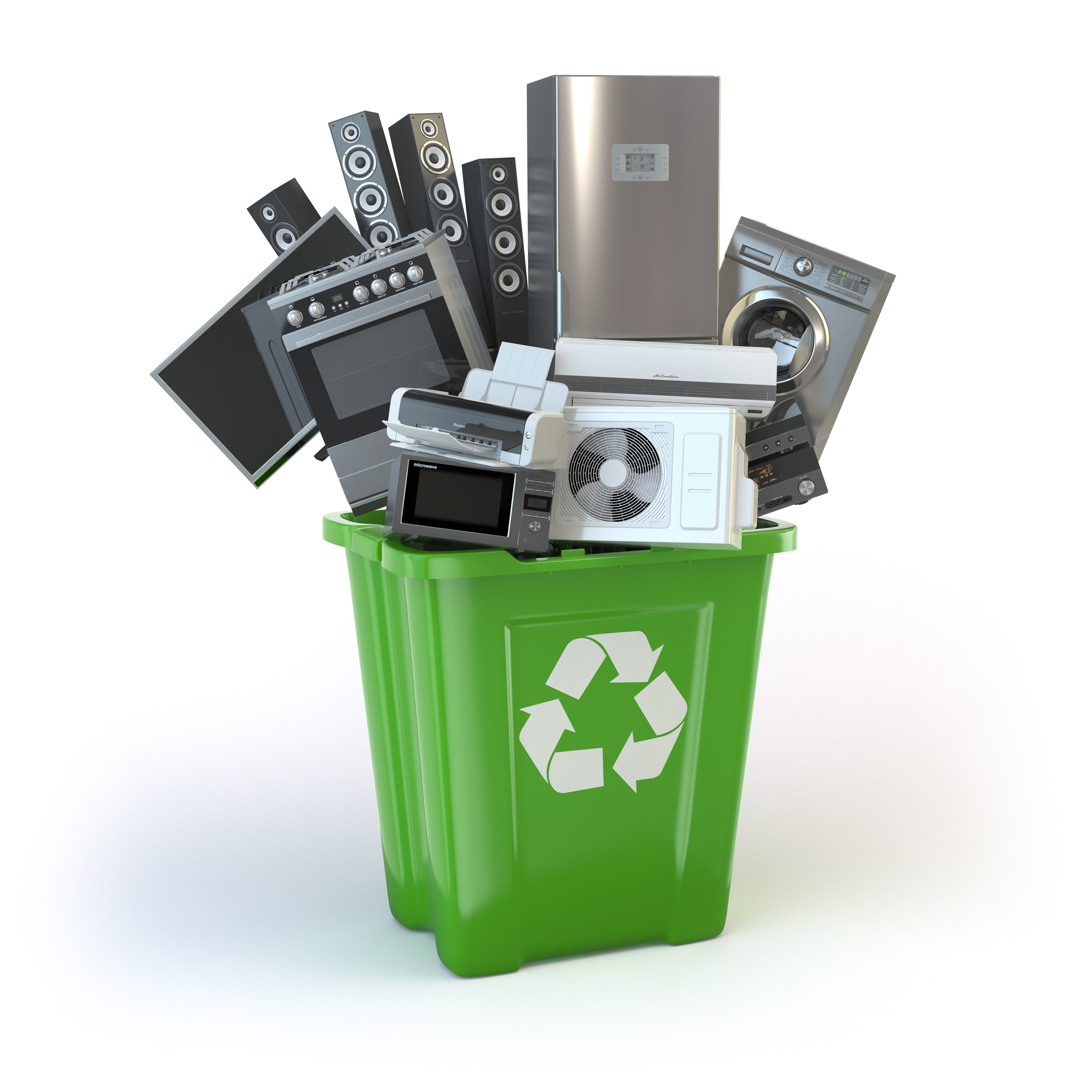
So, what exactly is appliance recycling? In essence, it's the process of dismantling old or discarded appliances to salvage usable components and raw materials. The raw materials recovered, such as metals, plastics, and glass, can then be transformed anew for manufacturing other products.
The task of recycling appliances is more complex than processing recyclables like paper or plastic containers. Given the complex assembly and the different types of materials used in appliances, the process requires specialized machinery and facilities. The process entails the secure removal of hazardous compounds that might exist in certain appliances, such as the chlorofluorocarbons, or CFCs, typically found in refrigerators.
This meticulous process ensures that valuable materials are reused efficiently and potentially harmful substances are disposed of responsibly. The appliance recycling process not only contributes to waste reduction but also drives the circular economy, promoting sustainability in the long run.
→ Learn more: Is Scratch and Dent Furniture a Thing?
The Environmental Benefits of Appliance Recycling
Now that you know how it works, let’s talk about the advantages of recycling your appliances rather than leaving them to occupy space in a landfill.
Decrease in Landfill Waste: Every year, millions of appliances reach the end of their lifespan, becoming potential contributors to the mounting issue of landfill overflow. These items are often bulky and slow to decompose, taking up substantial space and contributing to the release of harmful greenhouse gases. Appliance recycling helps to divert these items from the waste stream, preserving landfill space and reducing associated environmental impacts.
Conservation of Natural Resources: Appliances contain a plethora of materials such as metals, plastics, and glass. A significant portion of these materials can be salvaged via recycling. This practice saves resources and reduces the demand for energy-intensive mining and manufacturing processes. For instance, recycling metals uses significantly less energy compared to extracting and refining raw materials, thus reducing our carbon footprint.
Lower Greenhouse Gas Emissions: Besides conserving resources, recycling appliances helps lower greenhouse gas emissions. The extraction, production, and transportation of new materials can be energy-intensive and carbon-heavy. Employing recycled materials in the manufacture of new appliances aids in cutting down these emissions, thereby alleviating the effects of climate change.
Prevention of Pollution: Many appliances contain potentially harmful substances such as refrigerants, oils, and insulation foams, which can cause significant environmental damage if not managed properly. For instance, refrigerants can contribute to ozone layer depletion and global warming if released into the atmosphere. Appliance recycling ensures these substances are safely extracted and properly disposed of, preventing pollution and protecting both the environment and public health.
How You Can Recycle Used Appliances
Knowing the benefits of appliance recycling, you might be wondering how you can contribute. Here are five practical ways for you to recycle your used appliances:
- Donate: Should your appliance be operational, but you're replacing it with the latest model, think about donating. Numerous charities and thrift stores will happily accept appliances, allowing them another round of usefulness and keeping them from prematurely landing in the dump.
- Sell: Similar to donating, selling your used appliances is a great way to ensure they continue to be used, plus you get to make a little extra cash. There are multiple ways, such as online platforms or yard sales, for you to find a new residence for your outdated appliances.
- Local Recycling Programs: Many cities have established recycling programs to handle these bulky items. Reach out to your local government, state energy office, utility provider, or retailer to inquire if they have appliance recycling programs like the Certified Appliance Recycler (CAR) and the EPA’s Responsible Appliance Disposal (RAD) or provide other services like curbside collection or drop-off spots for old or obsolete appliances.
- Retailer Take-back: When purchasing a new appliance, do check with the store if they run a trade-in program. Many appliance stores offer haul away services, like Idler’s Home, removing your old appliance while delivering the new one, often at no extra cost.
- Professional Appliance Recycling Services: Several companies specialize in appliance recycling, ensuring that your old appliances are disposed of responsibly and that all usable materials are reclaimed.
In selecting a way to recycle your appliances, the goal to minimize waste, maximize the recovery of valuable materials, and ensure any hazardous substances are handled safely is achievable.
5 Recommended Appliance Replacements
If you need new major appliances after recycling your older and more obsolete models, look at some of the top five sellers that Idler’s Home has to offer.
Samsung Brushed Black Front Load Laundry Pair
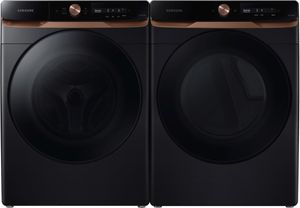
Shop the Samsung Brushed Black Front Load Laundry Pair
Introducing the Samsung Brushed Black Front Load Laundry Pair that’ll do your laundry in style, the Samsung 4.6 Cu. Ft. Brushed Black Front Load Washer and the Samsung 7.5 Cu. Ft. Brushed Black Electric Dryer offers an unforgettable experience with its ultimate cleaning performance. Features like Super Speed Wash and Super Speed Dry allow you to complete your laundry quickly and efficiently without sacrificing performance. The Steam Sanitize+ and CleanGuard technology provide added convenience and ensure a thorough and hygienic cleaning experience with this Samsung washer and dryer that offer Wi-Fi connectivity so you can even do laundry from the comfort of your couch.
→ Learn more: 4 Exquisite Samsung Washer and Dryer Sets
Whirlpool® 25.2 Cu. Ft. Fingerprint Resistant Stainless Steel French Door Refrigerator
Shop the Whirlpool® 25.2 Cu. Ft. Fingerprint Resistant Stainless Steel French Door Refrigerator
Upgrade your kitchen with the Whirlpool 25.2 Cu. Ft. Fingerprint Resistant Stainless Steel French Door Refrigerator that offers flexible storage solutions, including wall-to-wall frameless glass shelves and gallon door bins, maximizing space for your groceries. The full-width, temperature-controlled drawer allows you to store wide items at the perfect temperature. With features like the Accu-Chill Temperature Management System, FreshFlow Produce Preserver, and LED interior lighting, your food stays fresh for longer and is easily accessible. Plus, its ENERGY STAR certification ensures energy efficiency and cost savings on your utility bills.
➤ What customers are saying: “Love this. I absolutely love my new refrigerator. The front without fingerprints is amazing and the sides which are now gray instead of black look so much better. There is plenty of room for all my items. Very happy"
Fisher Paykel 30" Brushed Stainless Steel with Black Glass Free Standing Gas Range
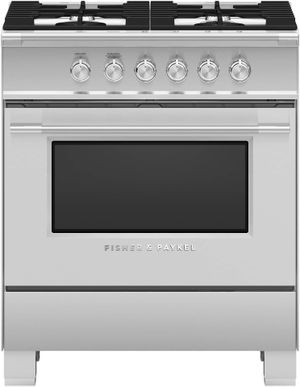
Shop the Fisher Paykel 30" Brushed Stainless Steel with Black Glass Free Standing Gas Range
The Fisher Paykel range offers a versatile cooking experience. The gas cooktop features four burners, providing precise heat control for all your culinary needs. The gas range has a total capacity of 3.5 cu ft, allowing you to easily bake and roast.
Frigidaire Gallery® 30" Black Induction Cooktop
Shop the Frigidaire Gallery® 30" Black Induction Cooktop
Experience lightning-fast cooking with the Frigidaire gallery cooktop. Its induction technology transfers heat directly to the cookware, resulting in quicker cooking times. The TempLock feature maintains a consistent temperature by automatically adjusting the power level. The Convenient Bridge Element expands the cooking surface for larger cookware, while the even heat distribution ensures consistent results.
→ Learn more: Electric vs Induction Cooktop: What's the Difference?
Café™ 24" Stainless Steel Built In Dishwasher
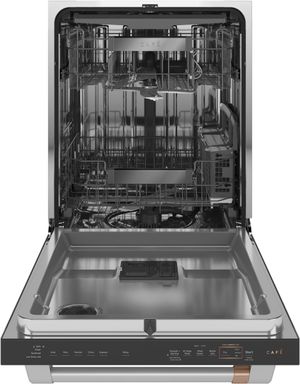
Shop the Café™ 24" Stainless Steel Built In Dishwasher
The Café Dishwasher offers precision cleaning and superior drying capabilities. With features like Variable-Pressure Jets and Dual-Convection Ultra Dry, expect exceptional results on fine China, dinnerware, and even dishwasher-safe plastics. The dishwasher provides loading flexibility, conveniently accommodating large items and dishwasher-safe plastics in the lower rack.
➤ What customers are saying: “I like the flexibility due to the three trays and adjustments. Cleans well and get's plastics dry too. And then there's the look of the dishwasher!”
Appliance Recycling Solutions
For appliance recycling to be a practical and wide-reaching solution, several elements must work together. These include:
- Regulations and Legislation: Government plays a crucial role in promoting recycling. Laws and regulations can encourage manufacturers to design appliances that are easier to recycle, and they can mandate that consumers recycle old appliances.
- Consumer Awareness: It's also essential that individuals are aware of the importance of recycling and the correct procedures for doing so. Education initiatives can be an effective way of promoting recycling. Talk to our experts to learn more.
- Industry Initiatives: Various players like manufacturers, stores, and recycling firms all participate in the recycling chain. Many are now taking steps to facilitate recycling, such as offering take-back programs or designing products that are easier to recycle rather than rotting in a landfill.
- Infrastructure: Having the necessary organization is a critical aspect of recycling. This includes everything from collection systems to recycling facilities that can process and recycle the materials found in appliances.
These elements can create a robust, effective appliance recycling system by working together. Such initiatives ensure our cast-off appliances aren't wasted but instead continue to serve as valuable resources for our community.
Appliance recycling plays an invaluable role in our ongoing struggle against waste and environmental damage. As consumers, our choices matter. Opting to recycle our used appliances not only aids in clearing out the clutter from our homes but also significantly contributes to the health and sustainability of our planet.
As we move forward, understanding and participating in appliance recycling becomes ever more crucial. It represents a constructive and feasible action we all can adopt to ensure a cleaner and brighter tomorrow. So next time you upgrade your kitchen or replace that old washing machine, remember, don't just discard — recycle!
At Idler’s Home, we do our part to help sustain the planet by offering haul-away services to remove old appliances and send them to the necessary facilities after delivering and installing the new ones. So, if you are in need of new appliances and aren’t sure how to get rid of the old ones, Idler’ Home has your back! So, stop by one of our showrooms or browse our vast catalog of appliances online today to get the appliance you need while responsibly disposing of your older ones.
FAQs
Want to know more about recycling your appliances? Take a look at some of the most common questions we have gotten from customers.
What appliances can be recycled?
Most major and small appliances can be recycled. Think about everything you use at home — your refrigerator keeping your groceries cool, your oven and microwave ready for your next meal prep, dishwashers, dryers, washing machines that take care of cleaning, and air conditioners for that added comfort. Guess what? When they're all worn out, recycling can give them a new life. Smaller appliances such as toasters, blenders, and coffee makers can also be recycled.
Where can I recycle my old appliances?
Most cities offer appliance recycling programs where you can have your old appliances on special collection days or by special request. Alternatively, some retailers often provide a recycling service when you purchase a new appliance.
What happens to my appliance once it's recycled?
The appliance is first dismantled, and any hazardous materials are safely removed. Subsequently, the varied materials, like metals and plastics, are separated and dispatched to facilities for reprocessing into new merchandise.
Is there a cost to recycle appliances?
The cost can vary depending on the appliance and your location. Some programs offer free recycling, while others may charge a small fee. Sometimes, you can even receive a rebate for recycling certain appliances.
Can I donate my old appliances?
Yes, if your appliances are still in working condition, consider donating them. Many organizations accept used appliances to support individuals and families in need.
Why Trust Idler’s Home?
At Idler’s Home, we believe in providing the highest quality products and service to our community. Over the span of 70 years (and counting), our business has seen successful growth, with over 100 employees and with five locations along the central coast of California. Not only do we offer major appliances, quality furniture, and the best mattresses but we also provide hot tubs and swim spas and perform kitchen design services. In addition, our trained professional installers can set up all appliances we sell while our factory-trained technicians service and repair them if they ever break down. Suffice it to say: Idler’s is dedicated to help you make the vision you have for your home a reality.
Shop Appliances at Idler’s
Envision the possibilities for your home and shop appliances online at Idler’s. Our friendly team is always happy to help you consider Appliance Recycling— whether you call us, email us, or use our online chat feature. Or better yet, stop by any of our five Central Coast locations to experience the quality of our products yourself. Visit us today!
→ Learn More: Kitchen Design Stores: Idler's Home Reviews
